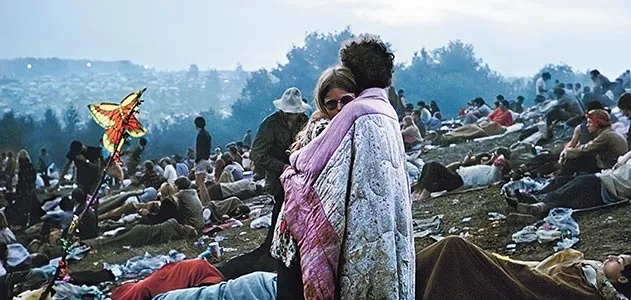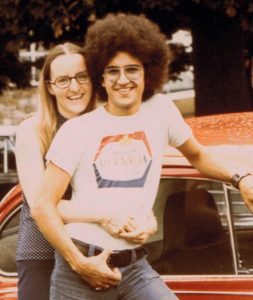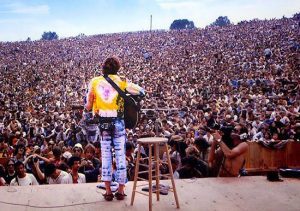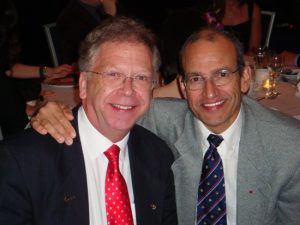
I happened to be hitchhiking that life-changing afternoon. My parents had purchased a hobby farm outside Bethany, Ont. But with my family away in the late 1960s, suddenly the farm became my responsibility. So, this early August day, not owning a car to get me from Toronto to the farm, I chose to hitchhike my way there. My last ride pulled over at the intersection of Hwys 115 and 35, and I ran toward the car for the lift.
That’s when I tripped off the curb of the road, twisted my ankle really severely. And everything changed.
Several months before that fateful turn, as it were, I’d written my final exams of the year at Toronto Metropolitan University (then Ryerson). I had one full year of broadcast journalism credits under my belt. I’d hosted an all-night radio show at CJRT FM (the Ryerson radio station) spinning what was known as “underground music.” I’d had several features published in a whole string of popular music magazines, but technically wasn’t a professional because I hadn’t been paid
“Our magazine is brand new. We haven’t collected from our advertisers yet. So, when we publish our second edition, you’ll get paid,” each of the publishers promised me.
As it turned out, not one of the magazines – Grapevine, Pop, and Wingit – ever printed more than one issue. So, I never got paid and technically was not a professional rock journalist yet. That did not, however, stop me and several of my school chums from making plans to attend an event we’d heard about on the pop music grapevine.

There was an outdoor rock music festival scheduled in mid-August in upstate New York. So, my friend and classmate Ross Perigoe and I figured we’d pack a tape recorder and audio tape and document this musical event in the States.
“All we have to do is get across the border to New York, find this farm everybody’s talking about,” we thought, “and we’ve got a scoop!”
Well, everything came together perfectly. Perigoe and I got another couple of former high-school buddies to join us. Mike Clancy, a first-year University of Toronto student and leader of a rock band I’d managed, had figured out where the festival was located. And Mike Hoffstetter, also at U of T and older than the rest of us, owned a 1960 Ford Anglia. All we had to do was scrape together admission of $18 U.S. in advance or $24 U.S. at the gate – and we were as good as there.
Then, I tripped over the curb while hitchhiking to the farm that August day. Overnight my ankle turned black and blue and ballooned to the size of a softball. Someone recommended I see a podiatrist. He wrapped the ankle in adhesive tape. My skin reacted to the adhesive and I broke out in a horrid rash that nearly hospitalized me.

Meanwhile, another member of our merry band contracted infectious mononucleosis, and then Hoffstetter’s car broke down. We’d probably never have even made it to the Rainbow Bridge at Niagara Falls.
Had we overcome all other stumbling blocks, 55 years ago this week, the four of us would have witnessed the event known simply as “Woodstock.” We’d have seen and heard Ravi Shankar, Joan Baez, Joe Cocker, Santana, The Who, Jimi Hendrix and (my favourites) Blood Sweat and Tears.
However, since nearly half a million people turned up in Sullivan County, N.Y., the traffic jams around Yasgur’s dairy farm might well have prevented us from getting to the main gate. And if we’d reached the grounds, we might have lost all our gear in the rain and mud that plagued the natural farmyard bowl that became the concert venue that weekend.

And even if we’d recorded interviews and sound, Perigoe’s and my radio documentary would paled next to Artie Kornfeld’s classic film Woodstock (released in 1970 and then awarded an Oscar for Best Documentary Feature). And because we’d have gone there with stars in our eyes, we’d never have seen what other actual journalists saw.
A New York Times editorial read: “The dreams of marijuana and rock music that drew 300,000 fans and hippies to the Catskills had little more sanity than the impulses that drive the lemmings to march to their deaths in the sea. What kind of culture is it that can produce so colossal a mess?”
As it turned out, within a year I’d chosen newspaper and broadcast journalism, not popular music fandom, as a career. And I have that sprained ankle to thank.
They say, “If you can remember the 1960s, you probably weren’t there.” Well, I was there, just temporarily sidelined.
My family was on a camping trip in New York state that summer. As we had originally come from southwestern Ontario, we all got excited by radio reports mentioning Woodstock where by sister was born. Who new there was another?